-
Posts
19 -
Joined
-
Last visited
Content Type
Profiles
Forums
Articles
Gallery
Downloads
Events
Posts posted by feral
-
-
I'm terrible at answering questions, sorry.
Started off with a piece of 2" 4140 stock. The drift was just a tapered piece of round bar stock that was laying around at school. I did go ahead and flatten the eye out a little. I also roughed out a haft from a scrap of hickory. I still have to finish the handle (and heat treat the head and polish the faces) but i'm pretty happy with how it's coming along.







-
I had two friends there to help. I had Avery position while Scott and I struck.
I also did a little more work on it today to flatten the eye out a little and added my maker's mark. I still have to finish up the faces and of course haft it, but I'm REALLY exited! I was just going to use hickory for the handle, but now I'm thinking of getting super fancy and using something like curly maple. I haven't decided though.

-
I still need to clean it up and grind/finish the faces and I'm thinking of making the eye a little more oval (it's AWFULLY round right now), but I'm pretty happy with it so far. It's about 3 pounds and I intend for it to be my primary forging hammer.
Oh, and please ignore the pizza crusts. :P


-
Not a lot to add here..but i would like to ask if the sord pic you showed is one of yours,,and also the mace?
Totally forgot to answer this and I can't find a button for editing posts, but yes, I cast that bronze sword last semester as a project for an archaeology class. I did it in a rush so I didn't clean up the lines on my wax positive and as a result the finished piece looks really weathered (though I could always take a dremel to it and clean it all up, but I don't know that I'll bother at this point). I made the mace last semester too from a 3-foot long mild steel pipe and some scrap steel plate that was laying behind the art building. I used the same scrap plate for the axe too. So the sword was cast, the mace and axe were fabricated, and only the helmet and pauldron were worked on the anvil, but they were entirely cold worked.
Edit: NOW I found the edit button. :angry:
-
Ugh, I know what powdercoating is and I know how to paint metal. I was just asking if you'd suggest high-temp paint or just plain old spraypaint! And no, I wasn't planning to paint the face.
A pink anvil? I can hear the collective gasp already. (grin)
Imagine a lace curtain paint job!
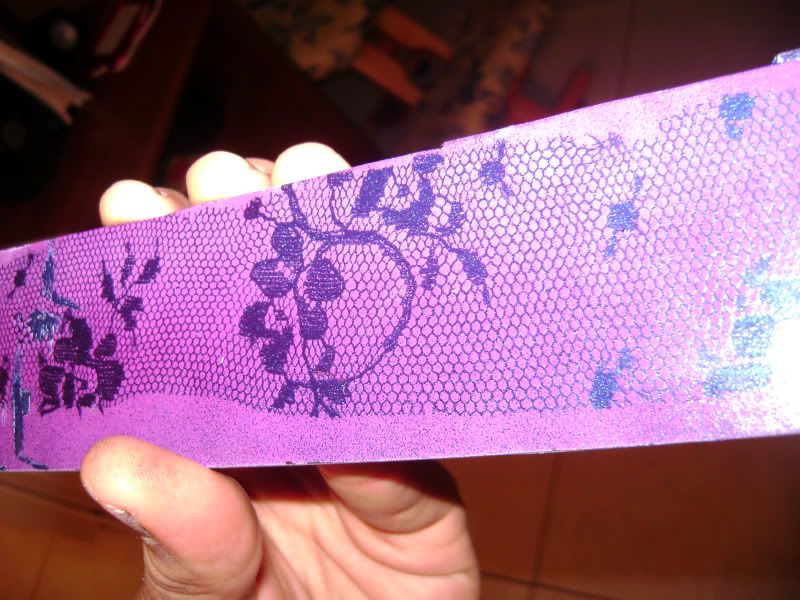
If I did that I'd need to make my motorcycle and my anvil match!
-
Anything you use will protect it, some coatings are better than others. The Boiled linseed oil mix tends to harden and build up like paint. Paint would be a much longer lasting protective coating for the anvil. If you choose paint, may I suggest a nice plaid or the family tartan. Pin striping is optional. (grin)
Of course I could just be super stereotypical and paint it pink, right?
On a more serious note, would I need to use high temperature paint or would pretty much any rattlecan exterior spraypaint work?
-
Best thing to clean up the face is hammering hot metal on it. When finished wipe it with some ATF (automatic transmission fluid)leaving only a thin film on the metal.
Straight boiled linseed oil takes a week or more here in my location. I use a 50/50 mix of BOILED linseed oil and mineral spirits on the body every 30 days or so. The mineral spirits thins it out a bit so it can get into all the places. It takes about 3 days or so to dry. Multiple thin coats of the 50/50 mix works best and build up over time.Is there any reason I shouldn't use transmission fluid on the whole anvil?
-
Not a lot to add here..but i would like to ask if the sord pic you showed is one of yours,,and also the mace?....Now about the forge...If you are forging a long blade and heat it the full length each and ever time you heat it to forging temps. .You will only be able to forge a small section at a time as the rest will drop below forging heat levels.Heating the parts of the blade yooui cannot work will cause a large loss of metal due to scale..and likele leave pits that will take forever to remove when finishing the blade.
I don't plan to heat the whole blade over and over during forging, I just need the long forge box for heat treating (to avoid the expense of a heat treating oven of that size). I figured the best way to avoid the extra cost of a 3-4 foot long heat treating oven is to get a forge that I can use for heat treating in addition to forging. :-/
-
You can easily make a charcoal-fired heat-treating trough forge outside of your shop for that occasional need. Or, you can use a one-burner forge to heat-treat a sword. The one-burner can also be used to cheaply forge hooks, chisels, triangles, knives, etc.
I'm fine with it being a single burner, but don't I need to heat the whole blade evenly at once to properly heat treat?
-
Thanks Frosty. I think I'm still going to go ahead and make a sword-sized forge because I don't think an electric heat treating oven is in my budget and I want to be as self sufficient as possible. I can get the artist's special or the 5-burner special from majestic forge for 600-650 bucks or I can build it cheaper if I can find a decent set of plans, but I'm pretty well set on it (unless someone knows where I can come up with an affordable heat treating oven that's long enough for swords. I'm not sure that I've got anyone in my area to send blades off to for heat treating (though I admittedly haven't really looked yet).
Now I've got an open question for anyone that has answers: What's the best way to care for my anvil? I was planning to give it a once-over with a wire brush and I saw somewhere that it's a good idea to coat it with boiled linseed oil. Anyone have other or better suggestions?
-
Greetings again Feral,
Your anvil was made between 1943 and 1945.. While your at Home Depot pickup some extra 4x6 treated wood while you are making your anvil base cut out a section of your wood floor and make a wood ground platform for your anvil.... Than if you wish get a simple wood stove floor guard and you are good to go... No Fires .. They are typically about 4ft square... Your work is wonderful..
Forge on and make beautiful things.
Jim
Thanks for the anvil date! That means she was made during WWII and it seems pretty probable that she was made by women!
Of course this means now I've got to call her Rosie. :P
Also, I think you've just solved my anvil stand problem! Thanks for your help!
-
note that mopping down the wood floor with a strong 20 mule team borax solution will cut the fire risk substantially and is pretty non-toxic---they use it for cleaning baby diapers!
That seems like a pretty good idea, though honestly I wasn't particularly worried about fire risk because I don't think I've ever dropped hot iron on the floor or anything. I know it's not ideal, but it's what I've got right now. Although, I wonder if I could cut out a larger section of floor, say 10' x 10' and pour a pad....
depending on the gap between the top of the concrete and the top of the wood floor you could just cut up a section of the wood and add concrete on to to the wood floor level, would give you a good surface without buying more concrete than you need and without the extra work of breaking up the old stuff
Yeah, that was my first thought though a friend said pouring concrete on top of old cured concrete might not adhere very well and could cause problems.
ANYWAY, does anyone have a way to date my anvil? It looks like the serial number is 213715.
-
I assume you are on the armourarchive.org too?
Since an anvil stand sitting on the dirt would be better than an anvil stand sitting on a floating wood floor; you still would be better with cutting a hole in the floor and having your stand rest against the planet.
As for doing it as a business---have you been taking all the business classes you can? Often more important than the art classes if you plan to do art as a business!
And I assume you are aware of the work in armour done by Ugo?
I'm actually not on armourarchive (though I've browsed it a time or two), I haven't had any business classes besides a few workshops, and I have no idea who Ugo is! As for the foundation, another alternative would be to cut through the floor and actually chip away a section of the bad stuff till I hit dirt and then pour concrete, or just put the stand against dirt. Still weighing options.
Well, Feral, I gotta say that I'm impressed. That's definitely some stellar work and you appear to have a lot of promise. And you get to go down in history as the first woman to take a "selfie" in a bathroom.... with a battle axe! I've seen a lot of bathroom selfies on the internet (never have understood it), but never one with a rose-d battle axe.
It was late and it was the easiest way I had available to get a picture that showed the scale of the axe. I'm not really a 'selfie' kind of girl, especially not in a bathroom and ESPECIALLY especially not when my face and clothes are covered in soot, oil, and sweat.
Feral, you are close to the Haywood CC campus in Clyde, NC where there are curriculum knifemaking and blacksmithing classes. (Credit hours while having fun and learning Useful Stuff!) It is also the site of the ABS spring and fall Smoky Mountain Hammer-ins.
There are also some blacksmithing classes at Blue Ridge CC in Flat Rock.
Also, YOU ROCK, GIRL! I think the Pink Ribbon mace and the Rose battle axe are awesome, and my wife, the gamer, agrees. She wants me to do a bronze pour so she can make a dagger.
Yeah, I'm going to try to attend a big smithing event here in the spring, though I think it might be at Penland (I'm going to have to check on that again now, I'm forgetful). The mace is jokingly referred to as the magic fairy wand and I'm still planning on doing a bunch of surface carving on the handle of the axe (and of course actually sharpening it--I decided to wait until closer to my show to do that so as to avoid any of my fellow students lopping of a finger in a moment of curiosity). I'm planning to do at least 2 or 3 bronze pours this semester.
Good score on the anvil. I like it. Is not often you find them that pristine. Looks brand new. Also some very nice work. You appear to have a ton of talent.
There is one more option that's available as far as mounting and that's to get or make one of those 3 legged anvil stumps. They're often used by horseshoers who have to deal with uneven ground in the itinerant work that they do.
Thanks! And yeah, the mobile anvil stump seemed like the most viable option initially and I expect it would be the easiest option, but I'm not super keen on having to pick up my anvil and move it every time I want to do some work. Just have to see what happens I guess.
Everyone else I didn't directly reply to, thanks for the welcome and the compliments!
-
Greetings and welcome Feral,
You got a fine Trenton anvil there.... That is one with a belt line weld that is all tool steel from the weld up... It will serve you well for many years..
You can make a great anvil stand from 4x6s from Home Depot.. I like setting the anvil down with a router about 1/2 inch and a couple of z bracket works just fine.. That's about all you need to get a great start... I wish you well
Forge on and make beautiful things
Jim
Thanks!
-
You've got a fairly typical farrier's anvil. The long heel will ring like a bell, and the narrow waist minimizes the sweet spot, but it's still a good foundation to build from. Trenton's are quality stuff and yours looks almost unused.
Forging inside the shop? As long as you have good air circulation and no worries about CO build-up, I'd definitely prefer to keep everything inside. As for the anvil stand, I'd cut through the existing raised floor and use pressure-treated lumber to build a "stump" that can sit directly on the concrete pad underneath. The hole just needs to be big enough for the stump to get through, nothing fancy.
A forge large enough to heat-treat swords? Methinks you're getting ahead of yourself. Aim small, miss small, as they say. Get a paint-can forge built and develop your skill level.
The concrete pad is REALLY bad. It's nowhere close to level and is basically a bunch of chunky gravel held together by cement so I haven't really decided what would be the best option yet. I'd considered cutting a hole in the floor and building a form in it down to what passes for the foundation and actually pouring a level concrete base for a stand. Think that might work?
As for the forge, I have the budget to set up this shop right now. I probably won't in the future. And I've been working on UNCA campus with a cast iron anvil, ball peen hammer, and small coal forge and I think I'm at a level to step my game up. A knifemaker friend of mine has also been pushing me pretty hard to get this all set up too. Here's some of my work over the past year:










-
The anvil is a Trenton I just bought for 425 dollars. The seller said he sourced it from Pennsylvania but I bought it in Asheville NC. I'm not sure of the exact weight because he had it listed as 110 pounds but the number stamped on the base is 100. I took pictures of the serial numbers and such so I'm hoping to find someone who can tell me its age and origin.
Anywho, I bought it to start a little knife/sword/armor shop because I'm a sculpture student at UNCA and my senior art show consists of cast bronze and aluminum figures and various medieval weapons and armor pieces and I'm hoping I can continue in this vein and maybe make a living one day. I also wanted some advice on an anvil stand and where to set up because the building I have for a shop is basically one of those carport roofs with plywood walls and a wooden floor suspended over a very ugly and badly poured concrete slab and I'm wondering if I can set up my anvil inside on this floor or if I should make a portable steel anvil stand and move it in and out of the shed every time I need it. The only other option would be to pour a new concrete slab and make an entirely new building but I'm trying to keep my costs down since I still have to buy a slack belt grinder and build or buy a gas forge that's long enough for me to heat treat swords in. I'd love to have any advice I can get, so without further adieu: pictures!

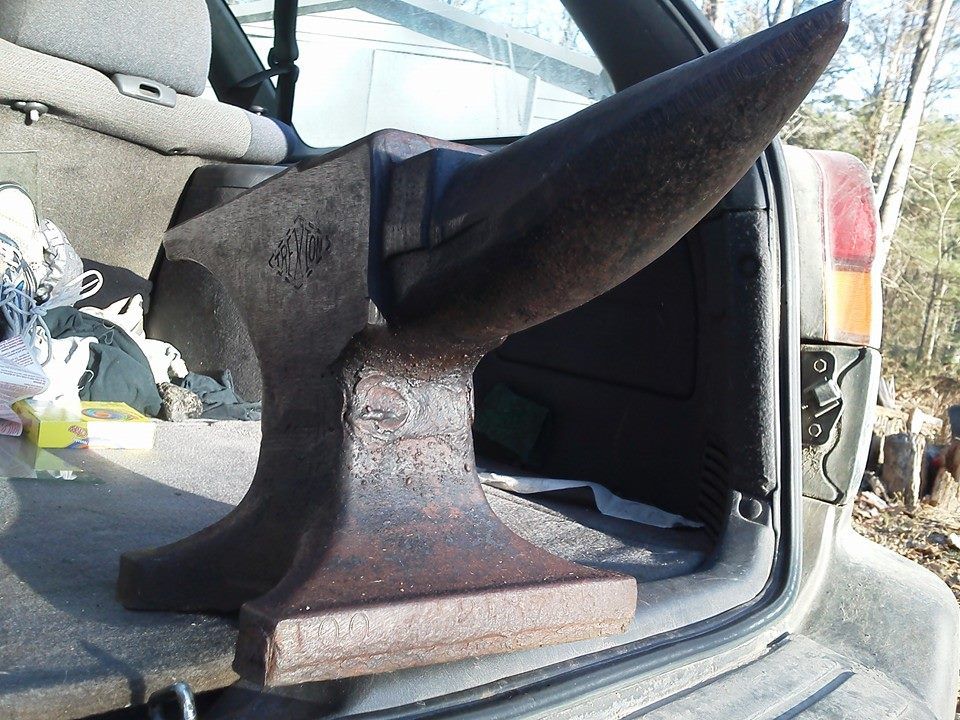
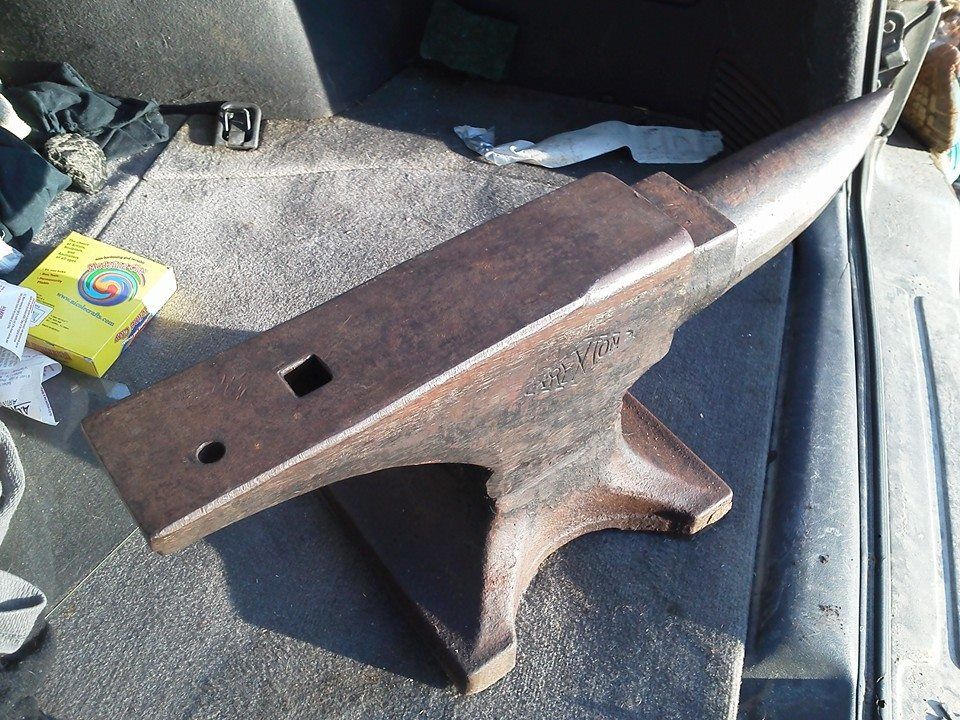
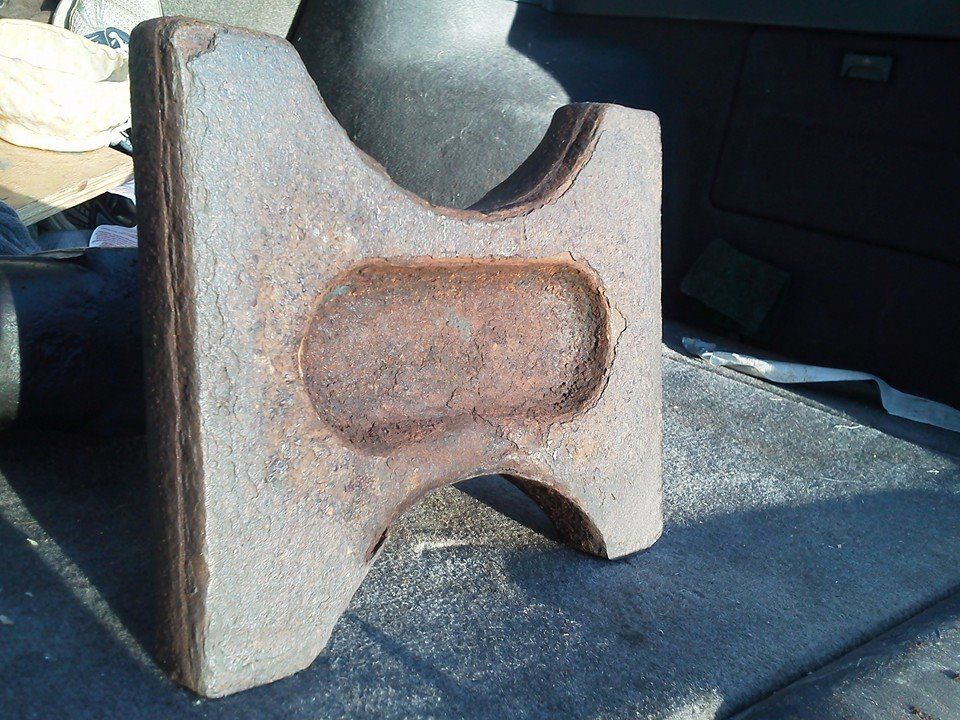
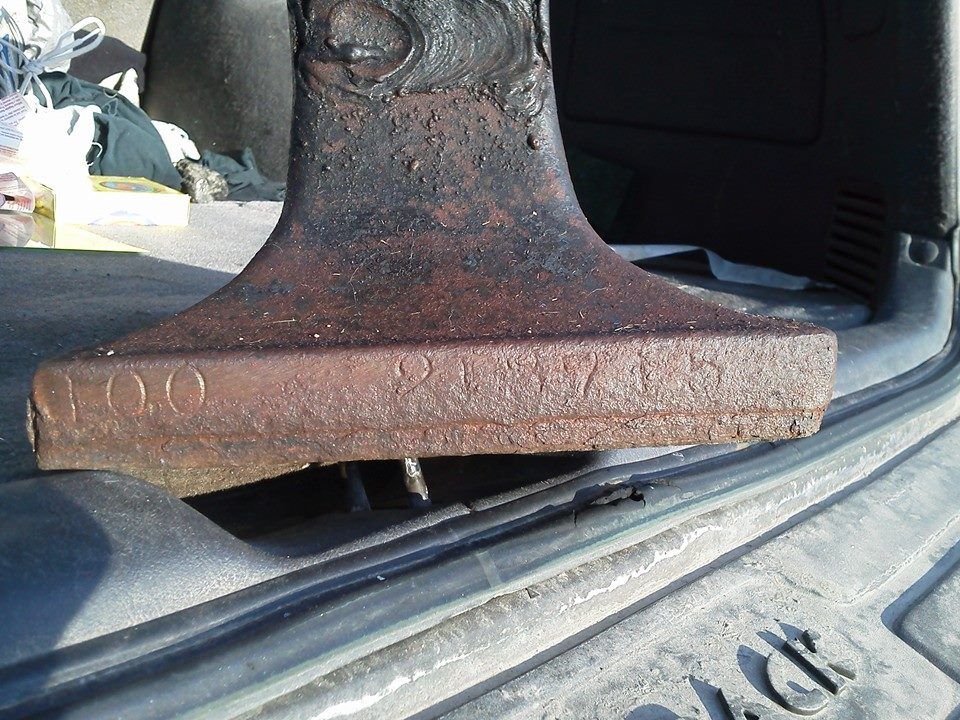
Here's the floor situation I'm dealing with:

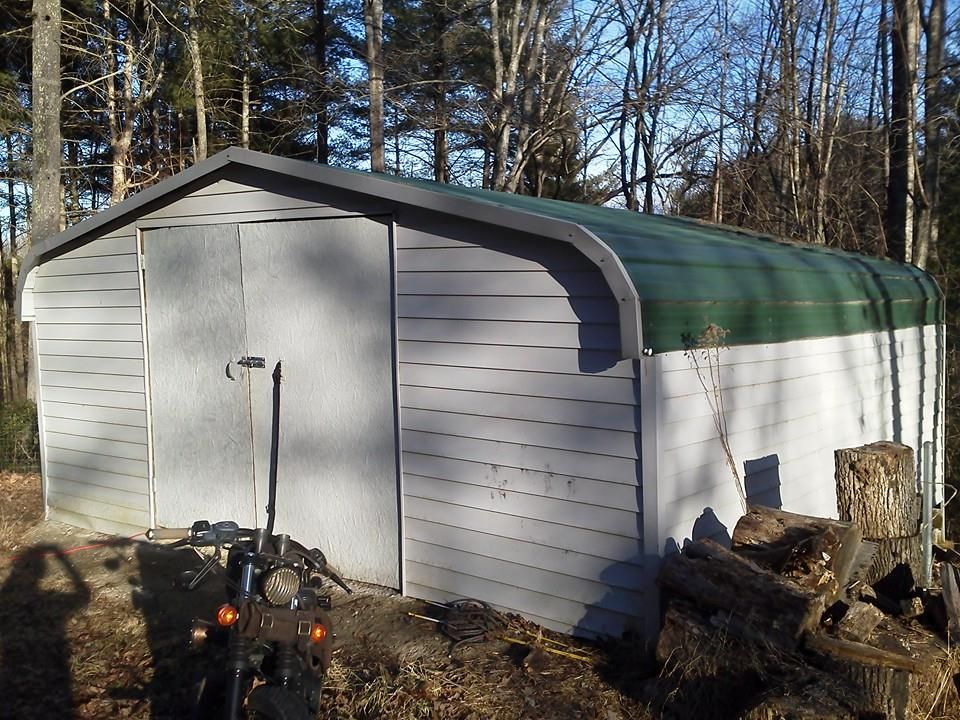


I forged my first rounding hammer over the weekend
in Hand Hammers
Posted
I had not planned to, no.